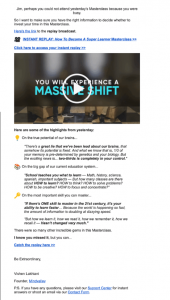Engaged employees are your top performers. They work hard, set a positive tone, and passionately express your brand and company values to customers. Other employees gravitate towards them. But employees who are disengaged or dissatisfied also affect your organization. According to recent research, disengaged employees cost the U.S. over $ 450 to $ 550 billion per year in lost productivity, and only 19 percent of employees consider themselves “very engaged.”
To address this, organizations should invite regular input from employees in the form of employee engagement surveys. Let’s take a look at why employee engagement surveys are important, how you should conduct them, and what questions you should include.
Why use surveys to measure employee engagement?
Employee engagement surveys serve several critical purposes. Employees can submit feedback anonymously, allowing frustrated or uninspired team members to express their real opinions. By serving as a channel for honest communication, surveys provide a true measure of your team’s engagement.
The feedback from employee engagement surveys gives you the data you need to respond to issues you may not even be aware of, supporting a healthy, happy work environment. Obtaining results from across your workforce means that you can identify issues particular to certain roles, teams, or management groups, as well as those that are endemic to your organization. You can also compare responses to the same questions over time and see how key metrics change as a result of your actions. Through a combination of relatively brief but frequent pulse surveys and more in-depth questionnaires, problems can be identified and addressed before they affect your business.
Finally, the very act of conducting employee engagement surveys is a tangible demonstration of your interest in your employees’ well-being. Simply asking questions and providing employees with the chance to make their voices heard can lead to more positive behaviors and improve engagement.

How to get the most out of employee engagement surveys
There are some basic best practices every organization should follow when creating and conducting employee engagement surveys:
- Each survey question should be simple, to the point, and guided by your organization’s engagement objectives. Think about your goals in administering each survey. Are there areas of employee engagement that are of particular concern in your organization? Have you made recent changes in incentive programs that you would like to measure the effectiveness of? Knowing what metrics are important for your organization makes survey results that much more valuable. Ideally, you’ll ask the same questions over a period of months or years, so you can assess progress on particular KPIs.
- You should also be sure to include a few open-ended questions, or the option to leave a comment with a multiple choice answer. Not every respondent will need this, but it provides an opening for employees with concerns to express them.
- Many companies perform annual surveys, often in connection with performance reviews. This is good practice, but annual surveys alone aren’t enough when it comes to measuring employee engagement. Employees change jobs, and you can’t wait months to find out you have a department-wide problem or someone who’s deeply dissatisfied. Conducting pulse surveys on a regular basis lets employees know their concerns matter and keeps you up-to-date on your workforce’s engagement level.
- Remember to administer engagement surveys anonymously, so your employees can be direct and honest about workplace concerns without fear of reprisals. You may choose to allow respondents to identify themselves if they want follow up, and you can also remind them to use confidential channels like HR for serious issues that require immediate attention.
- Make sure employees have a quiet, private location to submit their survey responses. They may be less forthcoming in an open office surrounded by peers and supervisors, or if they are expected to complete an engagement survey between regularly assigned tasks or after hours. Set expectations for how long the survey will take to complete.
Automated followup
Reviewing survey results thoroughly and forming an appropriate response can take considerable time. Fortunately, this is an area where technology can assist you. Automated tools are available for conducting prompt follow up to explore issues raised by employee feedback. The chatbot starts by asking simple, friendly questions, and the anonymity of an automated tool can make it easier for employees to express themselves.
Timely follow up ensures that employees feel heard after completing a survey. It’s not uncommon for employees who’ve just reported dissatisfaction or frustration to feel deserted after answering survey questions and failing to see any response. Using a workplace chatbot improves employee satisfaction and provides additional information to analyze.
After the survey
Once you’ve gathered employee engagement details in a survey, you’ll need to analyze the survey results and act to address employee feedback. Remember that employee engagement or disengagement may reveal uncomfortable truths. Acknowledging them is a necessary first step, but addressing the issues raised will take more time and may be harder to accomplish.
Organizations need to respond to feedback to demonstrate that they’re listening. For example, if employees report they don’t see a career path at your organization, managers could identify and promote career development and training opportunities. This helps employees grow and improves your organization’s chances of retaining top talent. Similarly, if employees don’t feel their efforts are appreciated, you might implement a recognition program.
It’s important to share survey results with your company at large, bearing in mind that you will want to preserve participants’ anonymity. Whether you present the results in a company meeting to invite additional questions and feedback or as a shared report that’s distributed and discussed among smaller teams, completing the feedback loop reinforces that you care about honest results and measuring progress.

Employee engagement survey questions
Asking the right questions in an employee engagement survey is key. A survey should touch on important components of engagement like employee satisfaction, alignment, and future goals. To put together a questionnaire that fits your organization’s needs, you’ll need to incorporate questions in each of these areas and understand how to implement them in your surveys.
Satisfaction questions
What does employee satisfaction mean in your organization, and how can you measure it? We all know what a truly satisfied team member looks like, and how they act: eager to come to work, overdelivering, always seeking out more than their individual role requires. But dissatisfaction can be harder to detect or measure. The following questions explore how your employees feel about your organization and whether they are satisfied with their place in it.
1. How do you feel about work today?
This question gets to the heart of the matter by inquiring about each employee’s attitude, with a focus on the present moment. It opens the door to a broader conversation and reminds your employees that your company actually cares about how they feel. It’s also valuable to find out if employees in a particular group or role are unhappy. This may be the symptom of a larger issue beyond the individual employee, which you’ll want to thoroughly investigate.
Consider using graphics with a range of happy to sad faces and allowing your employees to choose which best represents their current mood. This makes it easy for employees to answer and may get at feelings they are less comfortable expressing in words to their supervisor. You can still provide an optional comments field for employees who would prefer to describe their mood.
2. Would you recommend [organization] to your friends as an employer?
As the saying goes, a happy customer will tell a friend, but an unhappy one will tell 10 friends. That goes double for employees.
People who work for your organization are the single best source of word of mouth for recruiting. Whether a current employee would recruit their friends or warn them to stay away is a revealing measure of how your organization is doing overall and the employee’s feelings about the company. This is a good question to include regularly, so you can measure results against those from past surveys.
3. Do you feel excited about coming to work?
This question is designed to elicit strong responses as well as nonresponses. Employees who are excited about their jobs spread that excitement. For employees who are less engaged, a neutral answer provides the opportunity to go deeper and ask what would make them excited about coming to work.
4. Are you proud of working for [organization]?
This question centers on employee accomplishments as well as the employee’s role in the organization. Proud employees project their achievements. They represent your brand, both to customers and to the people they know. For employees who aren’t especially proud, offer an optional comments field so they can tell you why.
5. Are you satisfied with your current compensation and benefits?
Compensation is only one measure of employee satisfaction. However, employees who believe they are underpaid — or that others are overpaid — are more likely to express dissatisfaction. In addition, asking about benefits will help you learn which benefits are meaningful to your employees and which benefits they would consider valuable if offered.
6. Do you enjoy working with your team?
Team engagement is contagious. Happy team members feel valued and communicate that deep satisfaction to colleagues.
This is another question where you might offer a text field to allow employees to explain their answers, possibly identifying team members who deserve particular acclaim.
You may also receive complaints about other workers or managers. This is a good opportunity to direct employees to other channels if they need to resolve an issue or want help with a specific complaint.
Alignment questions
Questions about alignment in an employee engagement survey take the personal feelings from the first section and apply them to the overall environment in your organization. Do employees feel like what they do matters and that they are appreciated by management? Motivated employees with high engagement experience strong alignment — that is, their personal goals mesh with their role in the company at large.
7. Do you find your work for [organization] meaningful?
Employees who consider their work meaningful work harder and are happier. They are more likely to weather bumps in the road and stay committed to your organization over the long term. Engaged employees can clearly see the impact of their work and the work of the organization.
8. Does [organization]’s vision and values inspire you?
The purpose of this question is to find out how employees relate to your mission and goals. Do they see themselves as active participants and standard bearers, embodying organizational values to customers and other employees? Some employees may not be clear what your organization’s vision and values are. You might include them on the page with the question, or you might offer a response that indicates “I’m not familiar with our organization’s vision and values.”
9. Do others provide you with recognition for your accomplishments at work?
Recognition is the leading driver of employee engagement. Most people crave recognition and appreciation, especially from managers and other leaders, even if they don’t express it. And employees who don’t feel appreciated are likely to seek that recognition elsewhere. Recognizing employees on a frequent basis is a key practice for improving employee appreciation and engagement.
10. Do you feel like your supervisor is invested in your success?
Answers to this question reveal lessons about your managers and whether employees are set up to succeed. Managers have a strong effect on their entire team’s engagement. Demonstrating an interest in each individual’s work and career goals is a first step to building a culture among leadership that supports employee engagement.
11. Does [organization]’s culture foster a comfortable, supportive work environment?
This is an assessment of whether the employee sees the organization’s culture as an extension of their own goals or in conflict with them. Has your organization prioritized a truly inclusive, representative culture? The response to this question may reveal uncomfortable truths about your organization’s culture, but recognizing existing cultural issues is the first step to building a culture that every employee can be proud of and take part in.
12. Is leadership invested in and contributing to your culture initiatives?
Your organizational culture starts with a shared mission and how your leaders communicate that sense of purpose to members of your team and to customers. Unfortunately, nearly half (45 percent) of employees say leadership is “minimally” or “not at all” committed to improving company culture. Organizational leaders must champion and reinforce cultural values to show employees they care. It’s essential to communicate openly about company culture, including what employees feel is working, what isn’t, and what changes should be made as you move forward together.
Future orientation questions
Did you know 64 percent of employees may leave their jobs this year? Checking on whether your employees plan to stay with your organization in the long term is a critical part of any employee engagement survey. The questions in this section help surface areas where your organization needs more outreach to talented but frustrated workers.
13. Do you see yourself working here in a year?
3.5 million Americans quit their jobs every month, and a full one-third of U.S. workers considered leaving their jobs in the past 3 months. Consider including a text field with this question so that employees who feel comfortable sharing why they’re considering leaving can do so.
14. Does your work challenge you and aid your development?
This question seeks to find out how interested employees are in their work. Recently, 43 percent of employees stated “career advancement” as one of the top reasons they are looking to leave their company, followed by “lack of recognition”. Don’t create artificial difficulties as a substitute for genuinely engaging tasks, though, as employees whose work is overly challenging for reasons beyond their control may feel frustrated or not sufficiently supported.
15. Do you see a path for career advancement at [organization]?
Employees who see their current position as a dead end are unlikely to remain around long. This question also reveals whether employees perceive your organization as rewarding skilled workers with promotions and new opportunities.
16. Do you have the tools needed to maximize your potential here?
This question allows the employee to evaluate what is holding them back and provides a chance to identify ways to improve. Consider asking what resources would better support the employee in their work, accompanied by an optional text field for comments.
17. Have you recently thought about leaving [organization]?
You may want to reassure employees that this survey is anonymous or provide ambiguous choices for answers like “Not sure.” It’s better to find out the truth, so you can avert systemic issues before they affect productivity and morale.
18. Has anyone at the company asked about and expressed support for your career goals?
This question shows whether your company’s leadership is actively reaching out to employees about career development. You might include a recommendation to make an appointment with HR or a manager to discuss career aspirations.
Open-ended questions
Open-ended questions provide an opportunity for employees to express what’s really on their mind, in their own words. Always include a few open-ended questions in each survey, tailored to your organization. It’s also good practice to include a text field for entering optional comments on some other questions, as indicated above.
19. What practices do we need to change?
This question asks employees to look outward and share their recommendations. Employee engagement increases significantly when employees feel like active participants in a responsive organization.
20. Are there any problems with our culture?
Encourage employees to identify discomfort or ways in which your corporate culture doesn’t feel like a good fit. See their feedback as opportunities to improve areas within your organizational culture.
21. How can we help improve your engagement at work?
Ask employees for direct input on how to engage them. They’ll appreciate you listening, and they’ll be proud to see their recommendations put into action.
22. Is there anything else you would like to share that you find important to your employee experience here at [organization]?
It’s important to include this question to ensure you aren’t missing out on feedback that could improve your organization. Keep your door open. And when employees begin to share their vision for a more powerful, effective organization, listen carefully and be grateful they trusted you with the truth.
Request a live demo for Listen to see how fast and rewarding measuring employee engagement can be.
Business & Finance Articles on Business 2 Community
(92)
Report Post







